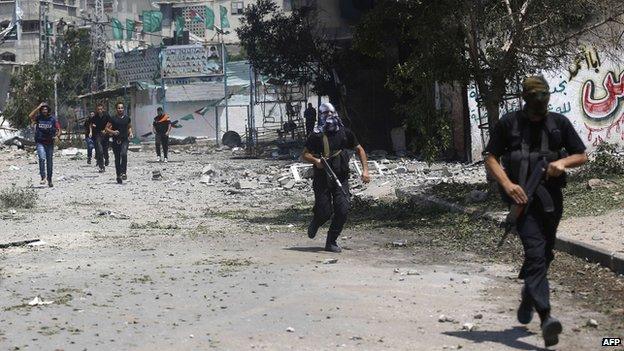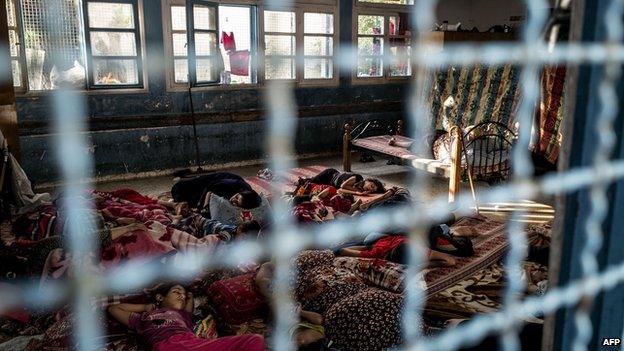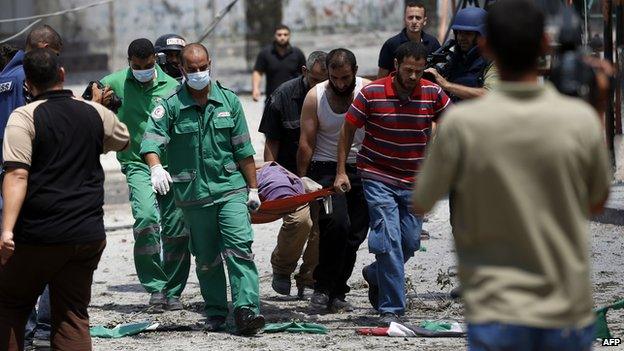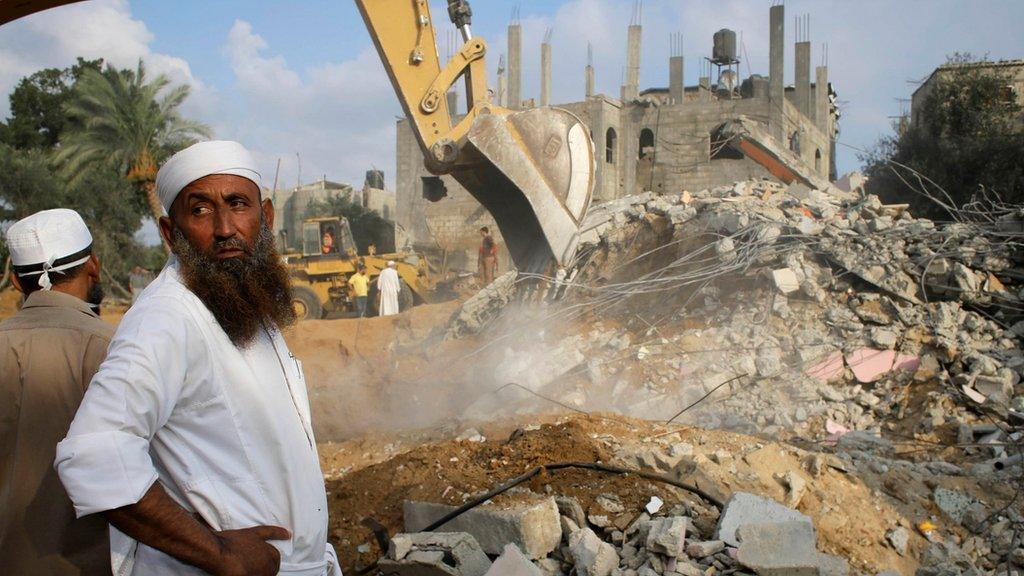Gaza crisis: Shejaiya assault defines grimmest day
- Published
Lyse Doucet in Gaza: ''Two patients were killed in their beds''
Every day, for 12 days, the tally of casualties was grim, the details often grisly.
Every day, the rockets kept soaring in a trail of white vapour out of Gaza and Israeli air strikes pounded this blighted sliver of land along the Mediterranean.
Then came the ground offensive which intensified Israel's campaign. Then came Shejaiya.
Israel's assault on a densely populated neighbourhood brought the greatest fighting and the grimmest news in this, the third Gaza conflagration in just six years.
Gaza's list of the dead crossed 500 and keeps climbing, according to figures from the health ministry here. The UN says the vast majority are civilians; many are children.
Israel's casualty toll was much lower. But confirmation that 13 soldiers were killed in the fight caused grief in a country where everyone serves in the army.
Israel said its troops met "a huge level of resistance" as they moved in to destroy "extensive tunnelling" underground, and the infrastructure for what it calculates as 10% of the rockets being fired into Israel.

Hamas fighters were visible on the streets of Shejaiya
In Shejaiya we saw Hamas spotters taking up positions on empty streets, talking into telephones and walkie-talkies as they maintained a lookout.
Colleagues who arrived later in the day saw gunmen with black balaclavas and concealed weapons moving through the neighbourhood. And journalists and medics got caught in crossfire when a two-hour humanitarian truce was shattered in minutes.
'Where do we go?'
As Israel digs in deeper, the fighting intensifies.
For many days now, Israel's Operation Protective Edge had almost seemed to be a ghost war. In areas we were able to reach, Hamas fighters had only been visible by the rockets they fired, and through defiant messages on their TV and radio networks.
Almost every day Israel reports that it has thwarted infiltration attempts through underground tunnels.
On the ground it has been women and children who keep emerging from front lines as they flee their homes close to Israel's border.
It was the same in Shejaiya, only worse.
When we arrived in the neighbourhood in the morning, after a night of Israeli shelling, the streets were largely deserted as black and white smoke billowed on the horizon, amid incessant artillery fire.
Residents were still escaping whenever and however they could. Some families darted out of doorways, one by one, into battered cars when they thought it was safe to make a run; others moved like a human stream flowing away in all directions.
Israel said it repeatedly warned residents to leave the area.
"We asked them to leave again and again," Israeli Prime Minister Benjamin Netanyahu told BBC Arabic TV.
"We called them up, we texted, and we sent them messages. But Hamas said 'don't leave'," - a reference to allegations that Hamas is using civilians as "human shields."
"Warning?" said Anas, a 20-year-old university student with a mop of curly black hair who stood on a street corner. "They don't warn us, they kill us."
Whenever we ask Gazans that question, they reply: "Where do we go?"

Many who fled Shejaiya have taken refuge in schools run by the UN
The UN says 43% of Gaza is now "affected by evacuation warnings" or declared a "no-go area".
In the past four days, the numbers seeking shelter in UN-run schools shot up by 400%.
The UN is running out of supplies, morgues run out of space, and hospital wards are packed.
On day 13, Gaza's main Shifa Hospital took in the greatest number of casualties since this war began.
As the day wore on, one family after another huddled on a wooden bench at the entrance waiting for news of loved ones inside the emergency surgery unit.
The ambulances kept screaming in, bringing stretchers with them.

Emergency crews and ordinary civilians helped carry away the dead and injured
By early afternoon it was the turn of four inconsolable girls, who sat with their wailing grandmother unable to offer much comfort.
When their father Nihad joined them, he knelt close to deliver the bad news: their mother, 28-year-old Israa, was dead.
Then, for a moment, the four girls lost their father too. He fainted and lay slumped on the floor as medics rushed to help.
As the days go by, there's a sad familiar choreography to Gaza's recurrent wars. As the news gets grimmer, the demands mount for an urgent ceasefire.
And as the chorus of concern grows, both sides know their time may be running out, so military operations escalate, and the human cost deepens.
And this time, mediation is more complicated.
In 2012, neighbouring Egypt, then led by the Muslim Brotherhood, had more clout with Hamas. Now would-be peace-makers criss-cross the region from Qatar to Istanbul to Cairo, looking for the right voice at the right time.
The UN's top diplomat is already in the region, and Washington's man has just arrived.
Day 13 is over, and no-one can say whether day 14 will be any better. There is always the fear it could get even worse.
- Published21 July 2014
